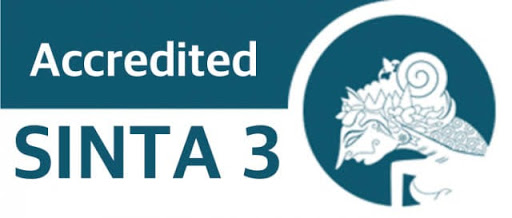Pelatihan Islamic Goal Setting untuk Meningkatkan Efikasi Diri Siswa dalam Pengambilan Keputusan Karier
DOI:
https://doi.org/10.15575/jpib.v5i1.11949Keywords:
Career Decisions, Goal Setting, Self EfficacyAbstract
References
Al-Bukhari, A. A. M. bin I. (2011). Ensiklopedia hadits; Shahih al-bukhari 1. Almahira.
Amir, H. (2016). Korelasi pengaruh faktor efikasi diri dan manajemen diri terhadap motivasi berprestasi pada mahasiswa pendidikan kimia Unversitas Bengkulu. Manajer Pendidikan, 10(4), 336-342.
Aprilia, D. (2013). Pengaruh konseling karier terhadap peningkatan efikasi diri pada siswa SMP 12 Banjarmasin. Studia Insania, 1(1), 89-103. http://dx.doi.org/10.18592/jsi.v1i2.1081
Ardiyanti, D., & Alsa, A. (2015). Pelatihan "PLANS" untuk meningkatkan efikasi diri dalam pengambilan keputusan karir. Gadjah Mada Journal of Professional Psychology, 1(1), 1–17. https://doi.org/10.22146/gamajpp.7357
Arikunto, S. (2016). Prosedur penelitian: Suatu pendekatan praktek. Rineka Cipta.
Bozgeyikli, H., Eroglu, S. E., & Hamurcu, H. (2009). Career decision making self-efficacy, career maturity and socioeconomic status with Turkish youth. Education Sciences and Psychology, 1, 15–24.
Casmini, Nurfadhi, T., & Kusumaningrum, P. (2021). Penanaman khauf dan raja’ dalam pendidikan karakter remaja. Syifa Al-Qulub : Jurnal Studi Psikoterapi Sufistik, 5(2), 123–131. http://dx.doi.org/10.15575/saq.v5i2.8730
Desmita. (2017). Psikologi perkembangan. PT. Remaja Rosdakarya.
Hoelscher, M., Hayward, G., Ertl, H., & Dunbar-Goddet, H. (2008). The transition from vocational education and training to higher education: A successful pathway?. Research Papers in Education, 23(2), 139–151. https://doi.org/10.1080/02671520802048679
Izzawati, N. & Lisnawati. (2015). Efektivitas pelatihan perencanaan karir terhadap peningkatan efikasi diri dalam pengambilan keputusan karir. Jurnal Psikologi Tabularasa, 10(1). 70-88. https://doi.org/10.26905/jpt.v10i1.244
Kolb, D. A. (2014). Experiential learning: Experience as the source of learning and development. FT press.
Komariah, A. (2019). Pendekatan semantik terhadap kata Raja’ dalam Al-Qur’an. UIN Sunan Gunung Djati Bandung.
Lutfianawati, D., Nugraha, R. S. P., & Rachmahana, R. S. (2013). Pengaruh pelatihan goal setting terhadap motivasi belajar bahasa Inggris siswa. JIP (Jurnal Intervensi Psikologi), 5(2), 125–138. https://doi.org/10.20885/intervensipsikologi.vol5.iss2.art8
Moran, A. (2013). Sport and exercise psychology: A critical introduction. Routledge.
Morisano, D., Hirsh, J. B., Peterson, J. B., Pihl, R. O., & Shore, B. M. (2010). Setting, elaborating, and reflecting on personal goals improves academic performance. Journal of Applied Psychology, 95(2), 255-264. https://doi.org/10.1037/a0018478
Muzakkir. (2012). Tasawuf jalan mudah menuju tujuan. Perdana Publishing.
Pratiningsih, P., & Sahrah, A. (2016). Pengaruh pelatihan goal setting terhadap efikasi diri manajer tingkat menegah di PT BAT Yogyakarta. Insight: Jurnal Ilmiah Psikologi, 18(2), 191–204. https://doi.org/10.26486/psikologi.v18i2.396
Saifuddin, A., Ruhaena, L., & Pratisti, W. D. (2017). Meningkatkan kematangan karier peserta didik SMA dengan pelatihan reach your dreams dan konseling karier. Jurnal Psikologi, 44(1), 39–49. https://doi.org/10.22146/jpsi.17378
Salas, E., & Cannon-Bowers, J. A. (2001). The science of training: A decade of progress. Annual Review of Psychology, 52(1), 471–499. https://doi.org/10.1146/annurev.psych.52.1.471
Santosa, E. I., & Hilmam, F. (2014). Pengaruh berbagi pengetahuan perencanaan karir terhadap efikasi diri dalam membuat keputusan karir. Jurnal Intervensi Psikologi, 6(1), 1-24. https://doi.org/10.20885/intervensipsikologi.vol6.iss1.art1
Seniati, L., Yulianto, A., & Setiadi, B. N. (2015). Psikologi eksperimen. PT. Indeks.
Setiawan, N. A. (2017). Pengaruh pelatihan penetapan tujuan (goal setting) untuk meningkatkan motivasi belajar agama Islam pada mahasiswa. Jurnal Al-Adyan, 12(1), 31-51. https://doi.org/10.24042/ajsla.v12i1.1443
Shihab, M. Q. (2007). Tafsir al-Misbah: Pesan, kesan dan keserasian Al-Qur’an. Lentera Hati.
Sugiyono. (2013). Metode penelitian kuantitatif, kualitatif dan R&D. Alfabeta.
Teuscher, U. (2003). Evaluation of a decision training program for vocational guidance. International Journal for Educational and Vocational Guidance, 3(3), 177–192. https://doi.org/10.1023/B:IJVO.0000006585.21787.0e
Wang, J., Zhang, D., & Shao, J. (2010). Group training on the improvement of college students’ career decision-making self-efficacy. Health, 2(6), 551-556. https://doi.org/10.4236/health.2010.26082
Warsihna, J., Ramdani, Z., & Tae, L. F. (2021). The measurement of science teaching efficacy belief instrument (STEBI): Sustaining teacher's quality. Psychology and Education, 58(3), 2972-2979. https://doi.org/10.17762/pae.v58i3.4380
Wijayanti, P. E. (2012). Pelatihan penetapan tujuan untuk meningkatkan selling efficacy pada wiraniaga (Tesis tidak diterbitkan). Universitas Gadjah Mada.
Yudhistira, S., Deasyanti, D., & Muzdalifah, F. (2020). Analisis model pengaruh goal orientation, general self-efficacy dan jenis kelamin terhadap self-regulated learning dalam pembelajaran jarak jauh. Jurnal Muara Ilmu Sosial, Humaniora, dan Seni, 4(2), 358–367. http://dx.doi.org/10.24912/jmishumsen.v4i2.8849.2020
Downloads
Additional Files
Published
Issue
Section
Citation Check
License
Authors who publish with this journal agree to the following terms:
- Authors retain copyright and grant the journal right of first publication with the work simultaneously licensed under a Creative Commons Attribution License that allows others to share the work with an acknowledgment of the work's authorship and initial publication in this journal.
- Authors are able to enter into separate, additional contractual arrangements for the non-exclusive distribution of the journal's published version of the work (e.g., post it to an institutional repository or publish it in a book), with an acknowledgment of its initial publication in this journal.
- Authors are permitted and encouraged to post their work online (e.g., in institutional repositories or on their website) prior to and during the submission process, as it can lead to productive exchanges, as well as earlier and greater citation of published work (See The Effect of Open Access).





